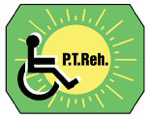


|
Current issue
Archive
Manuscripts accepted
About the journal
Editorial board
Reviewers
Abstracting and indexing
Contact
Instructions for authors
Publication charge
Ethical standards and procedures
Editorial System
Submit your Manuscript
|
4/2021
vol. 35 Can a cervical muscle inhibition technique reduce chronic low back pain?
Shabnam Joshi
1
,
Rekha Yadav
1
,
Alka Pawalia
1
Advances in Rehabilitation, 2021, 35(4), 38–46
Online publish date: 2021/11/24
Article file
- 2021-04-ar-06.pdf
[0.60 MB]
ENW EndNote
BIB JabRef, Mendeley
RIS Papers, Reference Manager, RefWorks, Zotero
AMA
APA
Chicago
Harvard
MLA
Vancouver
1. Balague F, Mannion AF, Pellise F, Cedraschi C. Non-specific low back pain. The Lancet. 2012; 379(9814): 482-91. 2.
Hasaneen BH, Eweda RS, Balbaa AE. Effects of the sub-occipital muscle inhibition technique on pain intensity, ROM and functional disability in patients with chronic mechanical low back pain. Bull Fac Phys Ther. 2018; 23(1): 15-21. 3.
Hartvigsen J, Hancock MJ, Kongsted A, Louw Q et al. What low back pain is and why we need to pay attention. The Lancet. 2018; 391(10137): 2356-67. 4.
O’Sullivan PB, Caneiro JP, O’Sullivan K, Lin I, Bunzli S et.al. Back to basics: 10 facts every person should know about back pain. Br J Sports Med. 2019; 54(12): 698-9. 5.
Seif HE, Alenazi A, Hassan SM, Kachanathu SJ, Hafez AR. The Effect of Stretching Hamstring, Gas-trocnemius, Iliopsoas and Back Muscles on Pain and Functional Activities in Patients with Chronic Low Back Pain: A Randomized Clinical Trial. Open J Ther Rehabil. 2015; 3(4): 139-45. 6.
Jagtap PK, Mandale SD. The Effect of Sub-Occipital Muscle Inhibition Technique on Hamstring Tight-ness Patients. J Evol Med and Dent Sci. 2015; 4(33): 5682-9. 7.
Cho SH, Kim SH, Park DJ. The comparison of the immediate effects of application of the sub-occipital muscle inhibition and self-myofascial release techniques in the sub-occipital region on short hamstring. J Phys Ther Sci. 2015; 27(1): 195-7. 8.
Smith, JA, Osborn M. Pain as an assault on the self: An interpretative phenomenological analysis of the psychological impact of chronic benign low back pain. Psychol Health. 2007; 22(1): 517-34. 9.
Gordon R and Bloxham S. A systematic review of the effects of of exercise and physical activity on non-specific chronic low back pain. Healthcare (Basel). 2016; 22(4): 1-19. 10.
Mayer J, Mooney V, Dagenais S. Evidence-informed management of chronic low back pain with lumbar extensor strengthening exercises. Spine J. 2008; 8(1): 96-113. 11.
Cabello MA, Martin JM, Maldonado GD, et al. Effect of interferential current therapy on pain perception and disability level in subjects with chronic low back pain: A randomized controlled trial. Clin Rehabil. 2017; 31(2): 242-9. 12.
Jung KS, Sung T. Effects of interferential current treatment on pain, disability and balance in patients with chronic low back pain: A Randomized controlled study. J Korean Soc Phys Med. 2020; 15(3): 21-7. 13.
Olawale OA and Agudzeamegah CM. The efficacy of interferential therapy and exercise therapy in the treatment of low back pain. Niger J Exp Clin Biosci. 2014; 2(1): 10-4. 14.
Tantawy SA, Kamel DM, Abdelbasset WK, Nambi G. A randomized controlled trial investigating the impact of interferential therapy on pain, range of motion and quality of life in patients with chronic non-specific low back pain. Arch Balk Med Union. 2020; 55(1): 47-54. 15.
Franca FR, Burke TN, Hanada ES, Marques AP. Effects of muscular stretching and segmental stabilization on functional disability and pain in patients with chronic low back pain. J Manipulative Physiol Ther. 2012; 35(4): 279-85. 16.
Danneels LA, Vanderstraeten GG, Cambier DC, et al. CT imaging of trunk muscles in chronic low back pain patients and healthy control subjects. Eur Spine J. 2000; 9(1): 266-72. 17.
Panse R, Yeole U, Trivedi S, Pawar P. To study the effect of Sub-Occipital Muscle Inhibition and Neural Flossing Techniques on Hamstring Flexibility in Young Adults. J Med Sci Clin Res. 2018; 06(11): 846-51. 18.
Desai B, Foram B, Shreeya V, et al. A study to compare retro-walking and sub-occipital muscle inhibition technique in hamstring muscle flexibility in collegiate students: An experimental study. Int J Physiother Res. 2019; 7(3): 3085-89. 19.
Kim BB, Lee JH, Jeong HJ, Cynn HS. Effects of sub-occipital release with cranio-cervical flexion exercise on cranio-cervical alignment and extrinsic cervical muscle activity in subjects with forward head posture. J Electromyogr Kinesiol. 2016; 30(3): 31-7. 20.
Kim SJ and Lee JH. Effects of sternocleidomastoid muscle and sub-occipital muscle soft tissue release on muscle hardness and pressure pain of the sternocleidomastoid muscle and upper trapezius muscle in smartphone users with latent trigger points. Medicine (Baltimore). 2018; 97(36): 1-6. 21.
Tousignant M, Poulin I, Marchand S, Viau A, and Place C. The Modified–Modified Schober Test for range of motion assessment of lumbar flexion in patients with low back pain: A study of criterion validity, intra – and inter-rater reliability and minimum metrically detectable change. Disabil Rehabil. 2005; 27(10): 553-9. 22.
Fairbank JC, Pynsent PB. The Oswestry Disability Index. Spine (Phila Pa 1976). 2000; 25(22): 2940-52. 23.
Chapman JR, Norvell DC, Hermsmeyer JT et al. Evaluating common outcomes for measuring treatment success for chronic low back pain. Spine (Phila Pa 1976). 2011; 36(21S): S54-S68. 24.
Aparicio EQ, Blanco CR, Quirante LB. Immediate effects of the sub-occipital muscle inhibition technique in subjects with short hamstring syndrome. J Manipulative Physiol Ther. 2009; 32(4): 262-9. 25.
Moon HJ, Choi KH, Kim DH, Kim HJ, et al. Effect of lumbar stabilization and dynamic lumbar strengthening exercises in patients with chronic low back pain. Ann Rehabil Med. 2013; 37(1): 110-7. 26.
Suh JH, Kim H, Jung GP, Ko JY, Ryu JS, Kang H. The effect of lumbar stabilization and walking exercises on chronic low back pain. A randomized controlled trial. Medicine. 2019; 98: e16173. 27.
Jeong ED, Kim CY, Kim SM, Lee SJ, Kim HD. Short-term effects of the suboccipital muscle inhibition technique and cranio-cervical flexion exercise on hamstring flexibility, cranio-vertebral angle, and range of motion of the cervical spine in subjects with neck pain: A randomized controlled trial. J Back and Musculoskelet Rehabil. 2018; 31(6): 1025-34. 28.
Hack GD, Koritzer RT, Robinson WL, Hallgren RC, Greenman PE. Anatomic relation between th rectus capitis posterior minor muscle and the dura mater. Spine (Phila Pa 1976). 1995; 20(23): 2484-6. 29.
Myers TW. Anatomy trains. Edinburgh: Churchill Livingstone, 2005: 97-101.
This is an Open Access journal, all articles are distributed under the terms of the Creative Commons Attribution-NonCommercial-ShareAlike 4.0 International (CC BY-NC-SA 4.0). License (http://creativecommons.org/licenses/by-nc-sa/4.0/), allowing third parties to copy and redistribute the material in any medium or format and to remix, transform, and build upon the material, provided the original work is properly cited and states its license.
|
    |